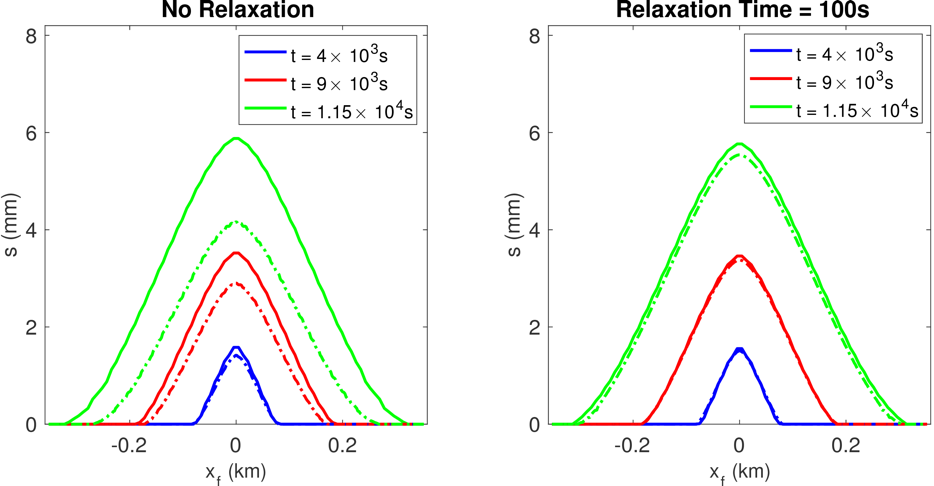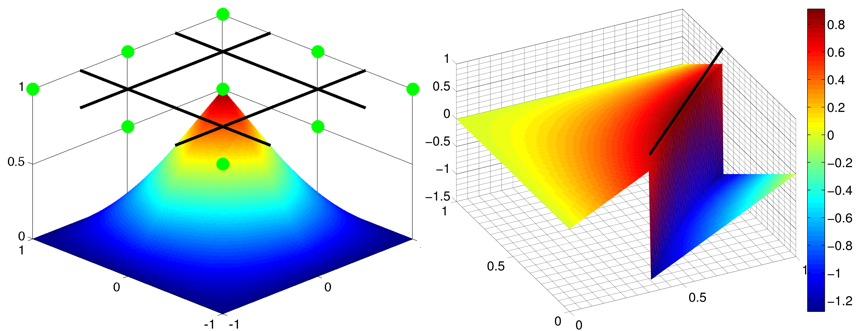Numerical Modeling of Fluid-Injection-Induced Shear Failure
Rajdeep Deb, Patrick Jenny
Abstract
A numerical modeling framework is presented, which is suited to study induced seismicity due to geothermal reservoir operation. Both shear failure, due to fluid injection into fractured reservoirs, as well as the microseismic effect of fracture-aperture changes are modeled. The flow problem is solved for both fractures and porous damaged matrix. A grid- and timestep-independent numerical method was developed for flow and mechanical failure solutions in fractured reservoirs.
Extended Finite Volume Method (XFVM)
In XFVM in order to account for the displacement jumps across fractures due to accumulated slip, additional basis functions are employed as depicted in the figure below. In our method, only one degree of freedom per fracture segment is introduced.
Shear Strength Relaxation Model
The shear strength can be resolved using the Prakash and Cliffton friction law. The extension of the Prakash and Clifton law for cases, in which failure is triggered by the fluid pressure requires a relaxation timescale in the order of the flow timescale. With this regularization, that is, by employing a finite timescale for shear strength relaxation, grid converged solutions can be obtained. As depicted in the right plot of the figure below, the extended Prakash and Clifton law provides grid converged solutions for fluid-injection-induced shear failure. The left plot in the figure depicts the fluid-injection-induced shear-slip solution using the Coulomb friction law for different grid resolutions.

Fracture Network Study

In order to test the numerical model under more realistic geological conditions, a fracture network with fluid injection is studied. The figure below depicts the matrix fluid pressure and the matrix displacement components after 800s of fluid injection. The b-value curves, for different grid resolutions as depicted in the left figure, follow the Gutenberg-Richter law (blue lines) for moment magnitude greater than a specified minimum value.

